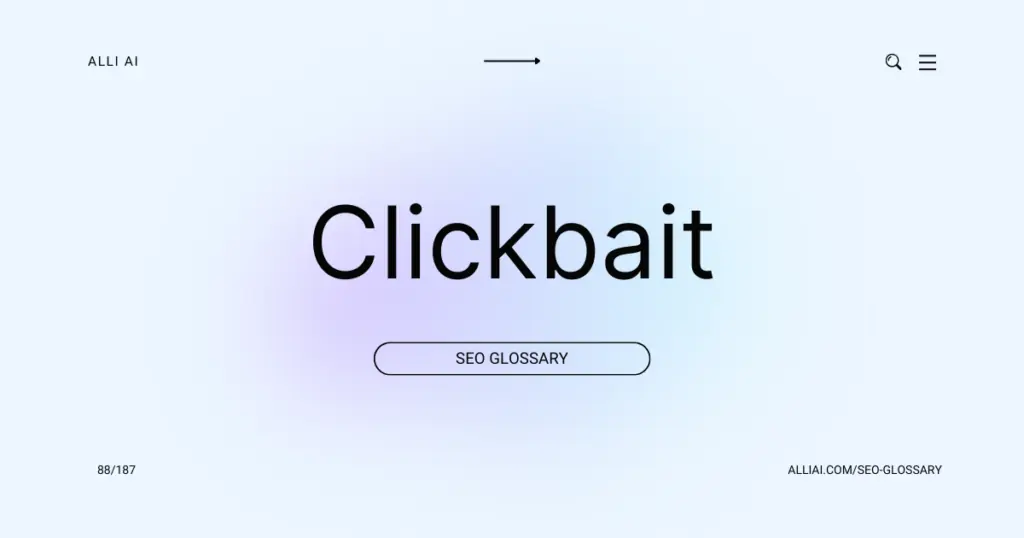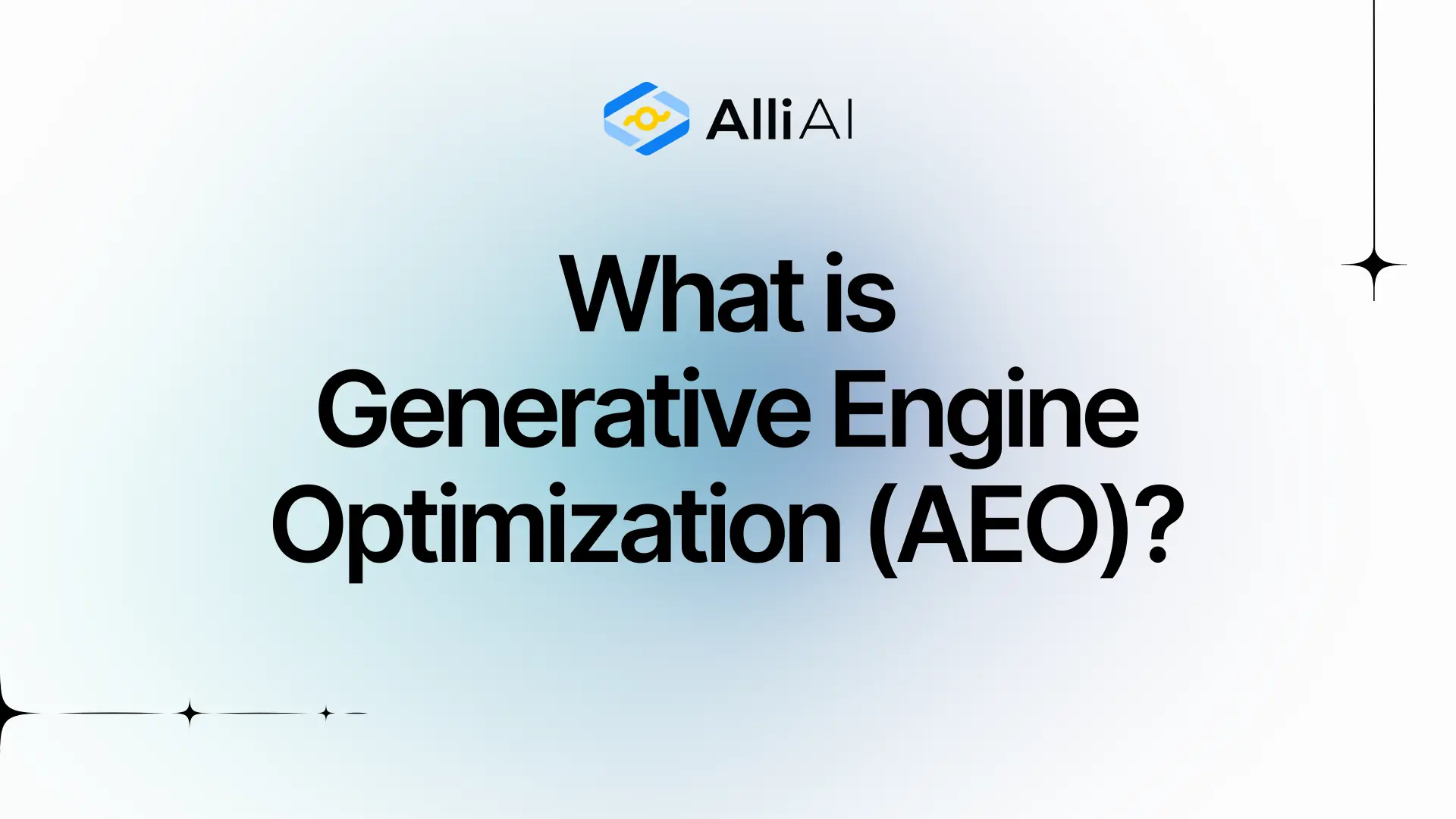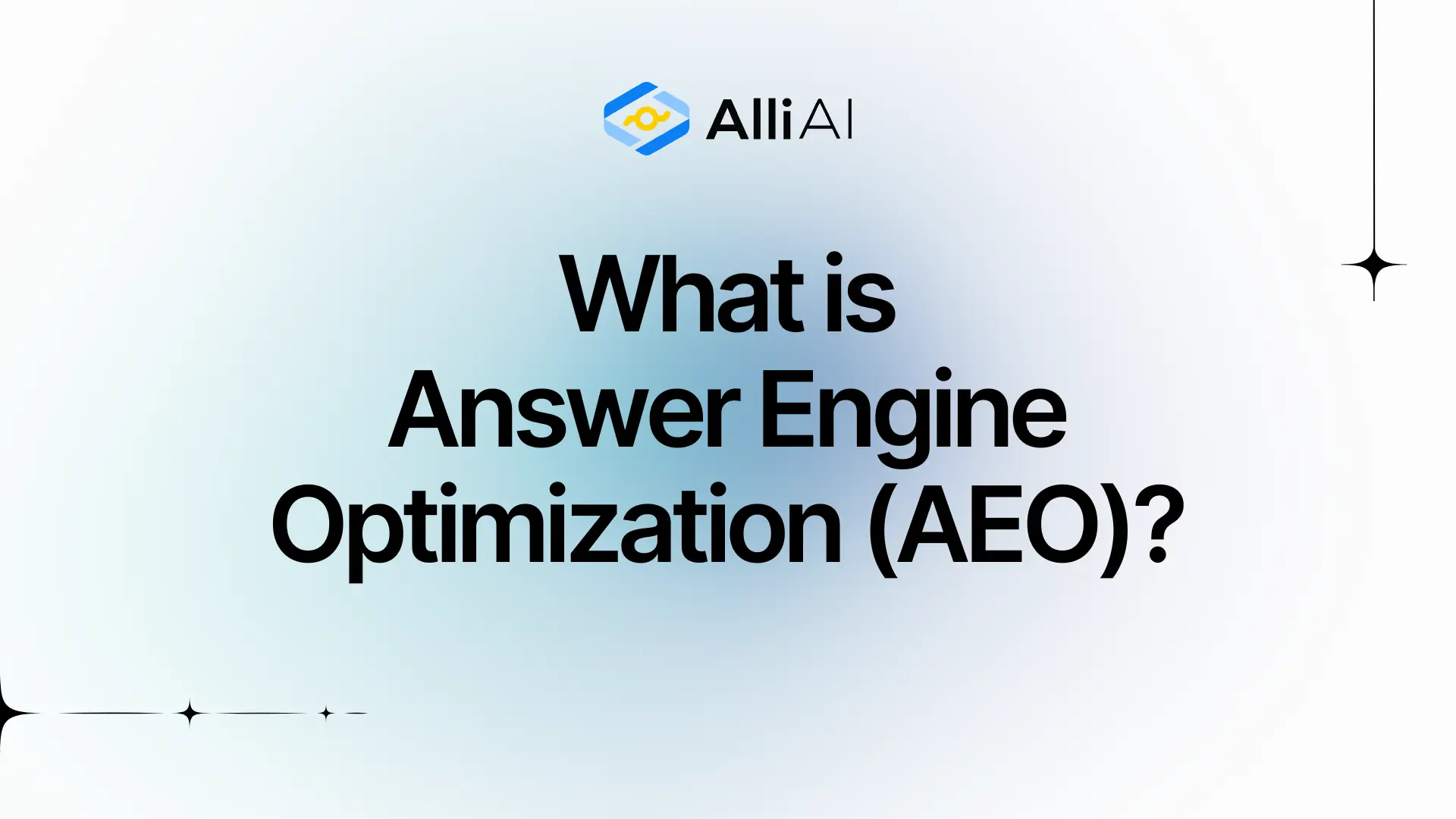What Does Clickbait Mean?
Clickbait refers to online content that uses sensational or misleading headlines to entice users to click on a link. These headlines often appeal to curiosity or emotions to attract attention and encourage more clicks, typically for generating advertising revenue.
Where Does Clickbait Fit Into The Broader SEO Landscape?
Clickbait fits into the SEO landscape primarily as a content strategy aimed at increasing user engagement metrics by compelling users to click on links based on emotionally engaging or sensationalist headlines. However, while it can initially boost traffic to a website, it may negatively impact user experience and site credibility if the content does not fulfill the expectations set by the headline. This can lead to higher bounce rates and potentially harm long-term SEO performance. Search engines like Google prioritize user experience, including the relevancy and quality of content, which can be undermined by deceptive clickbait practices. Therefore, while clickbait might attract more clicks, it needs to be balanced carefully with quality content that delivers on what the headline promises.
Real Life Analogies or Metaphors to Explain Clickbait
Clickbait is like a flashy bait on a fishing hook, designed to allure fish with its shiny appearance, promising a satisfying snack but ultimately leading the fish into a trap. Just as a bright, wriggling worm on a hook catches the eye of a hungry fish, clickbait headlines catch the eye of users with tantalizing promises of interesting content, only to often lead them to underwhelming or irrelevant information.
How the Clickbait Functions or is Implemented?
1. Emotional Appeal: Clickbait headlines often use emotional triggers (shock, excitement, curiosity) to grab attention.
2. Intrigue and Mystery: They typically pose a question or suggest a revelation (“You won’t believe what happened next!”), making it hard for readers to resist clicking to find out more.
3. Urgency and Exclusivity: Phrases like “Don’t miss out” or “Limited time” create a sense of urgency or offer something unique.
4. Using Numbers and Lists: Headlines featuring specific numbers or list formats (e.g., “10 unbelievable facts about…”) simplify the promise of value and organize expectations.
5. Personalization: Language that speaks directly to users’ experiences or desires (e.g., “for people who hate slow service”).
6. Controversy and Hyperbole: Exaggerating details or presenting controversial statements to provoke interest and reactions.
7. Visuals and Thumbnails: Accompanying images are often provocative, shocking, or highly suggestive to complement the headline.
8. SEO Keywords: Carefully selected keywords are embedded to optimize search engine visibility.
9. Social Proof: Phrases such as “Everyone is talking about it” invoke a bandwagon effect.
10. Iteration and Testing: Clickbait strategies rely on A/B testing different headlines and formats to see which garners more clicks and engagement, refining tactics based on analytics.
Impact Clickbait has on SEO
Clickbait can initially drive high traffic volumes due to its attention-grabbing headlines, potentially boosting visibility and engagement metrics. However, if content fails to meet user expectations set by the headline, this can lead to high bounce rates and short dwell times, signaling poor user satisfaction to search engines. Over time, this can harm a website’s credibility and authority. Consistently poor user experience metrics may lead search engines to lower the site’s ranking. Additionally, widespread use of clickbait can damage a brand’s reputation, potentially reducing user trust and long-term traffic. In sum, while clickbait might offer short-term gains in terms of traffic, it often negatively impacts SEO performance and user experience in the long term.
SEO Best Practices For Clickbait
1. Identify Target Keywords: Research and select target keywords that align with the clickbait theme, ensuring they have high search volume and relevance.
2. Optimize Title Tags: Include target keywords in the title tag while ensuring it aligns with the clickbait theme. Keep it under 60 characters.
3. Craft Meta Descriptions: Write compelling meta descriptions that build curiosity or promise something intriguing, incorporating target keywords. Limit it to 160 characters.
4. Use Header Tags Effectively: Utilize H1, H2, etc., for organizing content. Include keywords in at least the H1 tag, making it catchy and relevant to the clickbait theme.
5. Quality and Engaging Content: Create content that delivers on the promises of your clickbait title and meta description, integrating keywords naturally.
6. Optimize Images: Use relevant images with optimized ALT text containing keywords.
7. Internal Linking: Link to other related content on your site that supports or adds value to your main content.
8. Load Speed Optimization: Ensure the page loads quickly by optimizing images, minifying CSS and JavaScript, and leveraging browser caching.
9. Mobile Responsiveness Check: Confirm the page displays correctly across devices, optimizing for user experience and engagement.
10. Social Sharing Options: Incorporate easily accessible social sharing buttons to encourage distribution across social media platforms.
11. Backlink Building: Reach out to other websites for linking opportunities, enhancing domain authority and referral traffic.
12. Monitor Performance: Use tools like Google Analytics and Google Search Console to track performance and adjust strategies based on user interaction and engagement metrics.
Common Mistakes To Avoid
1. Misleading Titles: Clickbait often includes sensationalist headlines that promise more than the content delivers. This can lead to high bounce rates as visitors leave the page quickly upon realizing the content does not fulfill the headline’s promises. To avoid this, ensure your headlines accurately reflect the content.
2. Impact on SEO: Search engines prioritize user experience. Pages with high bounce rates and low user engagement due to misleading titles can be downranked. Focus on creating engaging and truthful content that matches the expectations set by your headlines.
3. Damage to Brand Reputation: Audiences lose trust in brands that consistently use clickbait. This damages long-term engagement and customer loyalty. Maintain credibility by using honest, clear titles that respect the intelligence of your audience.
4. Reduced User Engagement: While clickbait may increase initial clicks, it often fails to encourage meaningful interaction with the content. Engage users genuinely by providing valuable, in-depth content that encourages them to stay on the website, interact, and return.
5. Violation of Advertising Standards: In some jurisdictions, there are legal guidelines governing misleading advertisements, which can apply to clickbait. Avoid potential legal issues by adhering to advertising standards and ensuring all content is transparent and straightforward.
6. Poor Audience Targeting: Clickbait attracts a broad audience, which may not be the right fit for your brand or product. This leads to lower conversion rates. Tailor your content to appeal directly to your target demographic, ensuring it is relevant and directly addresses their interests and needs.
7. Over-Reliance on Emotional Reaction: Clickbait often tries to exploit emotional reactions. Instead of creating shallow emotional appeals, create content that offers emotional value through authenticity, helpfulness, and relevance.
By focusing on these practices, you can avoid the pitfalls of clickbait and improve both the quality of your traffic and the trustworthiness of your brand.






